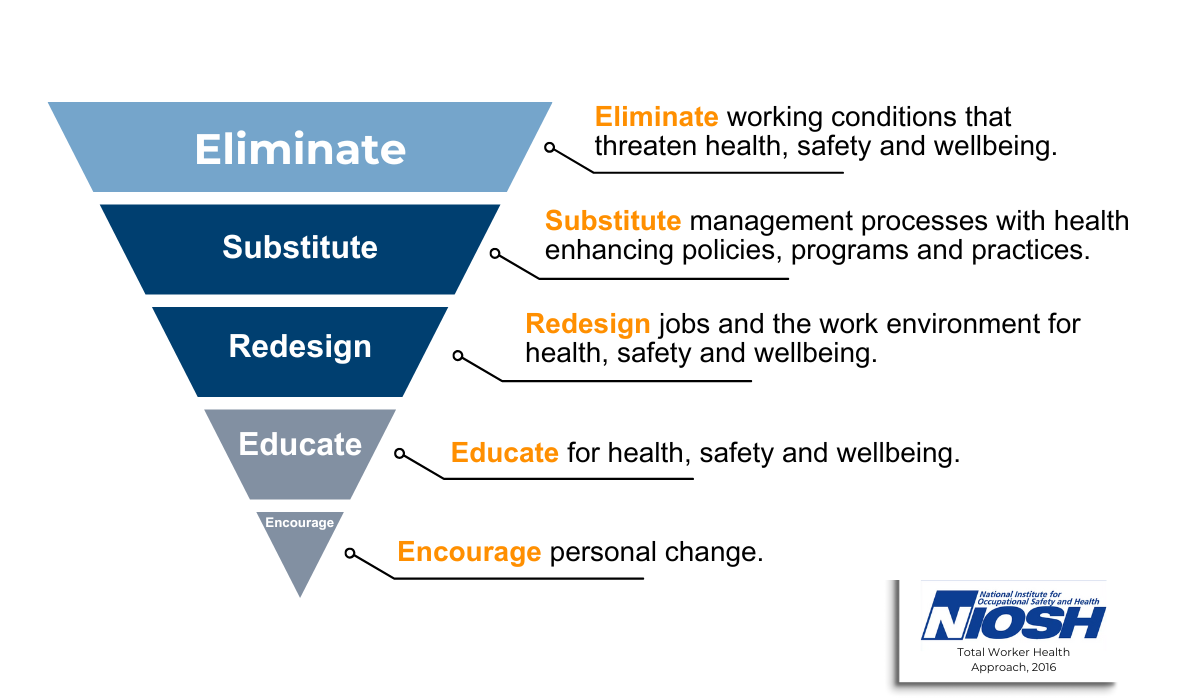- 22 December 2024
- Victoria Beresford
- WHS Tips & Insights
Why Safety Training is Key for Reducing Risks
A safe and productive workplace does not happen by chance. It starts with education. Health and safety training is the foundation of risk management, equipping your team with the skills and confidence to work safely, prevent harm, and build a culture of accountability. While training alone cannot eliminate every hazard, it ensures employees and leaders understand risks, apply control measures, and contribute to a safer workplace.
The Role of Training in Risk Management
The hierarchy of controls is the industry standard for managing physical workplace risks. This framework, outlined in the Model Work Health and Safety (WHS) Act and Victoria’s Occupational Health and Safety (OHS) Regualations , helps businesses prioritise how they address hazards:
- Eliminate the hazard by removing the risk entirely.
- Substitute the hazard with a safer alternative.
- Use engineering controls to create physical barriers that reduce exposure.
- Implement administrative controls to change how work is done, including providing safety training.
- Use personal protective equipment (PPE) as a last line of defence.
Although training falls under administrative controls, it plays a critical role in ensuring that safety measures are understood and applied effectively. Without proper training, even the best policies and procedures can fail to prevent harm.
Adapting the Hierarchy of Controls for Psychosocial Hazards
While the hierarchy of controls is effective for managing physical risks, psychosocial hazards require a broader approach. A Total Worker Health model considers both physical safety and mental wellbeing, ensuring workplaces address bullying, stress, aggression, and other harmful behaviours that can impact employees.

By adapting the hierarchy of controls, organisations can take a proactive approach to preventing and managing psychosocial hazards:
- Eliminate harmful working conditions that contribute to stress, burnout, and toxic workplace culture.
- Substitute poor management practices with policies, leadership strategies, and programs that promote respect, fairness, and employee wellbeing.
- Redesign jobs, workloads, reporting structures, and workplace environments to reduce high job demands, low job control, and workplace conflicts.
- Educate employees and leaders to identify, prevent, and respond to bullying, harassment, and aggression.
- Encourage organisational and personal changes that support resilience, inclusion, and psychological safety.
By embedding psychosocial risk management into workplace culture, organisations not only meet legal obligations but also create an environment where employees feel safe, valued, and supported.
Why Health and Safety Training Matters
Health and safety training does more than teach compliance. It empowers employees and leaders to take an active role in creating a safer workplace. Even when physical hazards are controlled, psychosocial risks such as workplace aggression, discrimination, and excessive stress can still cause harm.
Training ensures your team knows how to:
- Recognise hazards by identifying warning signs of workplace stress, bullying, and poor organisational justice.
- Understand controls by applying risk management strategies and following reporting procedures.
- Take action by speaking up, reporting concerns, and contributing to a respectful workplace culture.
Without training, even workplaces with well-documented safety policies can struggle to prevent harmful behaviours and ensure psychological safety.
The Benefits of Investing in Training
Investing in health and safety training delivers long-term benefits for employees, teams, and organisations.
Empowering Employees – When workers understand their rights and responsibilities, they feel more confident speaking up, reporting hazards, and contributing to a safer workplace.
Building a Culture of Psychological Safety – A workplace that prioritises safety, fairness, and inclusion reduces stress-related absenteeism, burnout, and workplace conflict.
Reducing Costs – Preventing workplace injuries, compensation claims, and employee turnover saves businesses money and resources.
Ensuring Compliance – Meeting legal obligations under WHS and OHS laws protects businesses from penalties and reputational damage.
By making training a priority, organisations strengthen safety leadership, reduce risks, and create healthier workplaces.
Making Safety Training a Priority
While eliminating hazards is always the goal, some risks cannot be completely removed. That is why health and safety training is critical in preventing harm and ensuring employees know how to manage workplace risks.
When employees and leaders understand the “why” behind safety measures, they become active participants in fostering a safer, more respectful, and compliant workplace.
What’s Next?
If you want to improve workplace safety and risk management, start by making health and safety training a priority. It is not just a compliance requirement. It is the foundation for a strong, engaged, and risk-aware workforce.
Helpful Links
- Victoria-based businesses. Learn more about your legal duty to provide training on the WorkSafe Victoria website.
- Businesses under the Model WHS Act. Find out more about your training obligations on the Safe Work Australia website.



